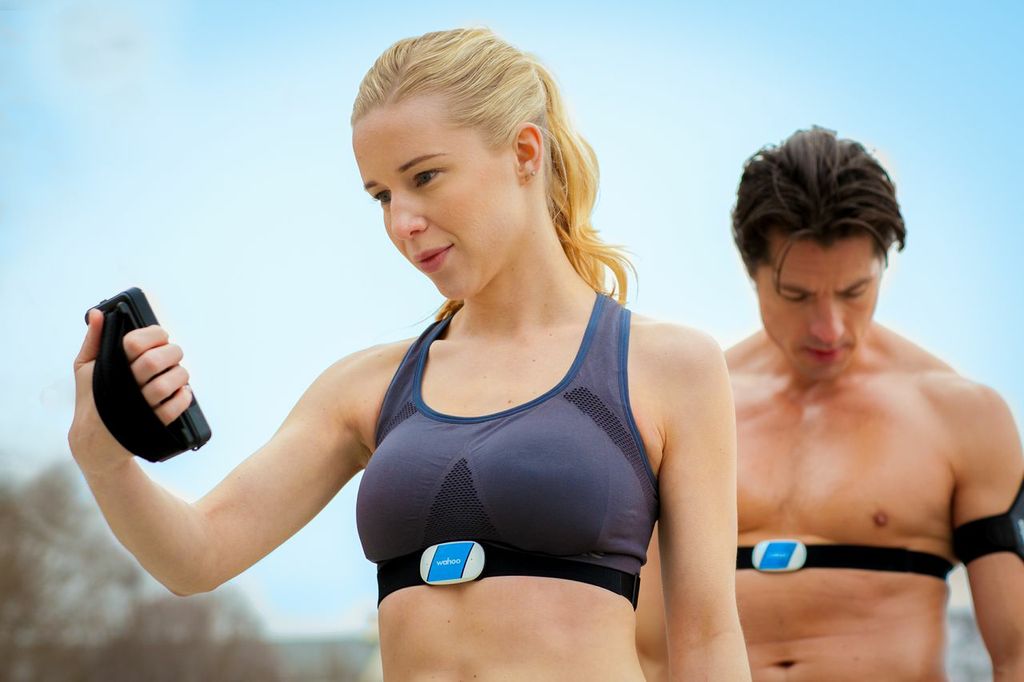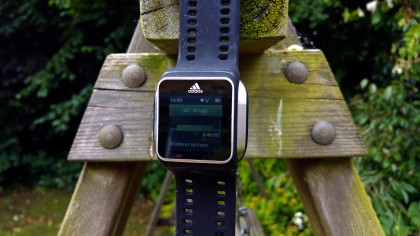The tech you’ll need to start running
Our Running Man of Tech's quick guide to running tech

OK, the headline is a bit unfair - I don’t believe you need a single piece of technology to start running. If you’ve got a couple of appendages to push you along and the desire to go a bit faster than walking for however long, you’ve got all the tools.
But in today’s hyper-connected age it’s very difficult to start running without wanting to quantify it some way, proof that you’re doing something good and can demonstrate to others just how well you’re doing.
I’ve had a few people, some who I considered experienced runners, ask me some more basic questions about running tech of late, so I thought I’d do something of an overview - if this is you and the below is a bit obvious, I apologise, but hopefully there’s something in there for everyone.
So if you’re looking at the poor souls panicking about pacing at the London Marathon this year and thinking ‘yeah, that sounds like something I’d like to do!’ then here’s a run-down of what to look for in terms of tech to get you started.
(By the way - here’s something you won’t need: smart glasses for running. I’ve no doubt that one day these will be a genuine alternative to running watches, but for now they’ll make you look like this:)

GPS watch
Easily the most oft-asked question I get from runners of all experiences: ‘which watch should I get?’
For the new runner, this is an easy answer: a cheap one. Don’t spend more than around £100 / $100 on a watch when starting out as you probably won’t make use of most of the functions until you’ve established what kind of runner you are and whether you really care about it at all.
Get daily insight, inspiration and deals in your inbox
Sign up for breaking news, reviews, opinion, top tech deals, and more.
The main thing is how easy it is to use at the start: is the screen big enough and does it show you how fast you’re going?
The good thing about watches is that as you go up in price, the functionality generally increases at the same rate. Longer battery life, smart notifications from your phone, training plans - all the way up to sensors to monitor how long and high you’re striding and how tired your body is.
At the bottom end, watches like the TomTom Spark 3 or the Garmin Forerunner 25 are a great place to start, showing you speed and heart rate (if you connect a strap) with a few other simple-to-use features as well.
Heart rate monitor
A new runner doesn’t really need to worry about monitoring their heart rate too much - you don’t need data overload at the start, just the ability to get out there and get used to going a bit faster.
That’s why it can be tempting to go for a GPS watch with inbuilt heart rate monitor - I’ve never been a fan of this tech though.
Sure, they can be accurate, and for some they’re infallible, but it’s so easy to see your heart rate drop out in the middle of a run, and that’s infuriating.

Instead, just get running without one to start with, and when you’ve completed a race or two start thinking about bagging a chest strap to get the most accurate data. A lot of people don’t like them as they’re too tight and feel restrictive, but spend a couple of weeks running with one and they’ll feel second nature.
As I’ve mentioned before the Wahoo Tickr is an excellent choice for both fit and functionality, as it’ll connect to most watches and phones - but any model will generally do, with cost squaring with the amount of sensors built into the module on the front of the strap.
(I am a fan of the Wahoo Tickr X because you can thump your chest twice to change music tracks… but it’s not really worth the extra money to just do that.)
Headphones
To me, a good pair of headphones is one of the most important parts of my training pack - if I’m off on a long and slow run by myself I love to zone out with a few podcasts for an hour or three.
(However, if you’re someone who says ‘Oh, I could never run without music’... I’d suggest you challenge that notion. I used to be the same, but as I started trying running without it there’s a whole world of mindfulness that you can access.
Try doing short runs where you just focus on how your body is feeling throughout the session, listening to your breath, how your legs feel, where you hold your arms… it’s amazing how attuned you can become to your running form when you spend some time on it.)
You’ve got two choices when it comes to headphones: do you care about wires or not? If you’re running with a phone attached to your arm, I’d say you can easily get a pair of wired sports headphones and be fine.
They’re cheaper and don’t run out of charge and do a great job. However, if you’re putting your music player anywhere else on your body, or can’t be bothered messing around with wires, Bluetooth is the way to go.
(Also remember that sound quality, which costs more, isn’t as important here. All your want is the vague approximation of noise in your ears while you run, not a faithful reproduction of a concert hall).
The key thing here is fit: you want a pair of lightweight headphones that don’t fall out. Simple - and given I’ve got got terrible ears that won’t hold anything in them, trust me when I say the following are great:

For wired headphones, the JVC HA-ETR 40 were some buds I picked up a couple of years ago and they’re sensational. The fit is exquisite, the wire has two lengths (one for the pocket and a shorter one for an arm pouch) and, well, that’s all I need.
Sound quality is passable, but sadly these seem to be going out of stock these days… I urge you to pick up a pair if you see them around.

For wireless options, the Plantronics BackBeat Fit are the best Bluetooth running headphones are the best I’ve ever used. They’ve got loops to hold them in place, a good battery life and comfortable controls - and they’re not too pricey.
If you want to be race legal (a lot of events won’t let you run with normal headphones) you’ll need to go for bone-conduction headphones, and your option is limited to AfterShokz Trekz models at the moment.
There are other options, but they’re few and far between - given the amount of people buying AfterShokz models, it’s crazy there aren’t more competitors.
Apps
I’m furious with Adidas at the moment. Back in 2010 I started using the MiCoach app, and it was a revelation.
It started me with my first training plan by just getting me to do a running test and asking which days I wanted to run - and it told me how far and fast I needed to run in real time.
From there came the MiCoach SmartRun watch, which packed the app into a fashionable wrist-piece with a clear and colorful touchscreen, as well as music playback. It remains one of my favorite pieces of technology today.
I had running workouts, a Spotify rival and strength training in one place. The watch was a bit chunky, but I knew the next model or two would be sleeker and more powerful.

But Adidas never created another watch like it, bought the Runtastic running platform and is shutting down its MiCoach app.
It’s annoying because it’s the perfect app to get people running, working out their pace and giving them real, sustainable training plans to follow.
If you’re a new runner now, I’d suggest joining Strava straight away. It’s a great social network for runners, cyclists, canoeists… all kinds of athletic activity. Even if you don’t use the training plans, you can get a good idea of what your chums are up to as inspiration.
Otherwise, it’s a case of finding what works for you. Nike, Endomondo, Runkeeper, Runtastic and MapMyFitness are all good options and will track you via a phone well.
I’d also thoroughly, thoroughly recommend picking up a Moov Now. It’s a small fitness tracker (that’s currently atop our best fitness tracker list) that costs very little, but can do so much.
You get guided workouts for improving running form, getting stronger or even cardio boxing and swimming. It’s incredibly accurate and even monitors sleep and steps. It’s helped my running enormously in the last year.
Panicking about pacing
I’m in a stupid place. I’ve done that thing that experienced runners always tell you not to do: change anything about your marathon plans the week before the race.
Well, I’m not really changing anything, just not settled on how fast I’m going to run this race. As I mentioned yesterday, I’m part of a running group on Facebook of people aiming to go below three hours for the marathon, and it’s full of people asking ‘I’ve done this time at this marathon with this training… should I be aiming for sub-three?’
And for every person that’s done a 1hr20 half marathon on 70 miles per week and failed to break the three hour barrier, there’s another that’s done 1hr28 on 50 miles and somehow smashed through it.
There’s no hard and fast rule it seems (which is obvious) but now I’m frantically tapping numbers into online calculators, trying to work out how fast I should be going in order to actually finish this race well.
I’ll deal with this in more depth tomorrow - but for now I’m sitting here with a slightly upset stomach convinced that I’ve got food poisoning for the first time in my life and it’s going to wreck my race.
The joys of being a runner.
If you've got any fitness tech questions - or just about running in general - feel free to get in touch using the links below, or the email address in my author bio! It'd be great to answer some direct questions from runners over the next few days.
- Gareth Beavis is TechRadar's Running Man of Tech. You're reading his London Marathon build-up diary. For more, check out:
- Day 1: The reasons behind the run
- Day 2: The tech I'll use to take the start line
- Day 3: In search of the perfect training plan
- - If you want to say hi, he's @superbeav on Twitter
- You can see his stumblings on Strava
- And for more data, follow him on Smashrun
- And if you want to get the full lowdown on the latest and greatest running tech, read the rest of the Running Man of Tech story here

Gareth has been part of the consumer technology world in a career spanning three decades. He started life as a staff writer on the fledgling TechRadar, and has grew with the site (primarily as phones, tablets and wearables editor) until becoming Global Editor in Chief in 2018. Gareth has written over 4,000 articles for TechRadar, has contributed expert insight to a number of other publications, chaired panels on zeitgeist technologies, presented at the Gadget Show Live as well as representing the brand on TV and radio for multiple channels including Sky, BBC, ITV and Al-Jazeera. Passionate about fitness, he can bore anyone rigid about stress management, sleep tracking, heart rate variance as well as bemoaning something about the latest iPhone, Galaxy or OLED TV.